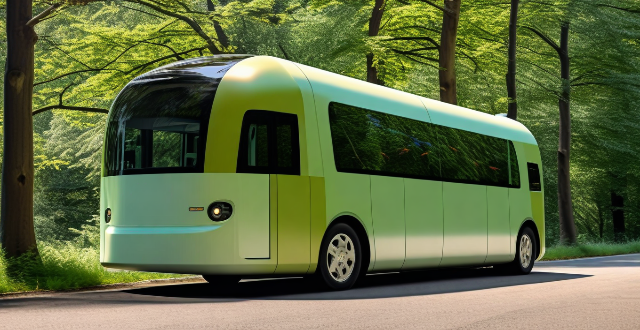Strategies and practices to make transportation more eco-friendly include promoting public transportation, using alternative fuels like electric vehicles and biofuels, developing infrastructure for biking and walking, implementing policy changes such as carbon pricing and emission standards, embracing technological innovations for improved efficiency, and encouraging behavior change through carpooling and telecommuting.

How Can Transportation Be Made More Eco-Friendly to Reduce Carbon Footprint?
In the quest to reduce our carbon footprint, transportation is a key sector that requires immediate attention. The following are some strategies and practices that can make transportation more eco-friendly:
Public Transportation
- Increased Efficiency: Enhancing the efficiency of existing public transport systems by ensuring timely schedules, reducing waiting times, and improving connectivity can encourage more people to use them.
- Expanding Networks: Expanding public transport networks to cover more areas can provide accessible options for a larger population.
- Promotion and Awareness: Promoting the use of public transportation through awareness campaigns can help change commuting habits.
Alternative Fuels
- Electric Vehicles (EVs): Encouraging the use of electric vehicles by providing incentives such as tax breaks or subsidies can significantly reduce emissions.
- Hybrid Technology: Promoting hybrid vehicles that use both gasoline and electricity can also reduce emissions.
- Biofuels: Investing in research and development of biofuels made from renewable sources like algae or plant-based oils can offer a cleaner alternative to fossil fuels.
Infrastructure Development
- Bicycle Lanes: Building more bicycle lanes and promoting cycling culture can reduce the need for motorized transport for short distances.
- Pedestrian Paths: Developing safe and convenient pedestrian paths can encourage walking as a mode of transport.
- Charging Stations: Building more charging stations for electric vehicles can make them a more viable option for many.
Policy and Legislation
- Carbon Pricing: Implementing carbon pricing on fuels can make non-eco-friendly travel more expensive, encouraging people to switch to greener alternatives.
- Emission Standards: Enforcing stricter emission standards on vehicles can push manufacturers to create cleaner technologies.
- Urban Planning: Smart urban planning that reduces the need for long-distance travel can play a significant role in reducing carbon emissions.
Technological Innovations
- Fuel Efficiency: Improving fuel efficiency in all types of vehicles can significantly reduce the amount of fuel needed, thereby reducing emissions.
- Autonomous Vehicles: The development of autonomous vehicles could lead to more efficient routes and less traffic congestion, reducing idling time and thus emissions.
- Connected Vehicles: Vehicles that communicate with each other and traffic infrastructure can optimize traffic flow, reducing unnecessary stop-and-go patterns.
Behavior Change
- Carpooling: Encouraging carpooling can reduce the number of vehicles on the road.
- Telecommuting: Promoting work from home or telecommuting can reduce the need for daily commutes.
- Education and Awareness: Educating the public about the environmental impact of transportation and the benefits of eco-friendly alternatives can inspire behavioral changes.
By adopting these strategies and practices, we can make strides towards a more eco-friendly transportation system, thereby reducing our collective carbon footprint.